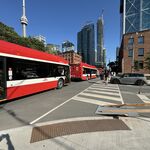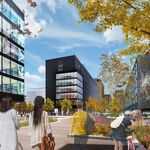DonValleyRainbow
Senior Member
Member Bio
- Joined
- Mar 5, 2014
- Messages
- 2,867
- Reaction score
- 1,926
- Location
- Kay Gardner Beltline Trail
Pardon my Toronto-centric lack of knowledge on this topic. But where are we in terms of HSR? Is an EA underway, or has the whole thing been shelved? Awhile back I found myself reading the London Free Press, and it seemed to me the city is fairly gung ho on the whole thing. But I believe since that time they put forward a BRT plan, which could be more of a near-term goal for them.
As well, part of me thinks that HSR has now become a wholly Prov project (when really it should be predominantly Fed). But because the Prov is on thin ice as it is, Trudeau and the Fed Liberals don't want to be seen alongside or siding with their Prov counterpart too much. So I don't envision a good fate for HSR in this decade (but hopefully I'm wrong).
Well there are two HSR projects, IMO, that are on the books.
The first is between Toronto and Quebec. The latest feasibility study was completed in 2011, and has provided positive numbers that show it is feasible. But nothing has been done since, other than the president of VIA Rail mulling about funding dedicated tracks through private investment. That's not a bad idea, but it would have to be all or nothing; either VIA Rail can work out a private investment arrangement that provides significant royalties to said investors, or the federal government just needs to step up and get an EA underway, provide the funds and get shovels in the ground.
The second is London to Toronto via KW. This project is problematic, at best. The study and announcement was spearheaded by Glen Murray, then Minister of Transportation. The proposed alignment does not follow what was proposed in the 2011 Feasibility Study. And the feasibility of this new alignment is questionable, at best. I'm of the opinion that if you are going to start HSR sooner than later, you work with your existing corridors and make incremental improvements, which simultaneously grows your ridership base. It also avoids a Sim City approach where you would have to expropriate significant amount of land and destroy a bunch of homes; you already have ROWs that penetrate city centres.
That alone makes Murray's proposal quite difficult to carry out; it creates a completely new ROW in the middle of nowhere, and requires navigation through existing urban built form. That will take years of negotiation and logistics, and make people angry. And I also think the premier recognized that, and hence shuffled him out of the transport portfolio. I haven't heard anything about concrete progress since. MTO just posted a job ad for a newly created Rail Coordination and Advisory Branch, and while it is focused on RER, the ad states the successful candidate will "support the Ministry's rail initiatives including high speed rail and rail safety." So maybe something will be done, maybe not.




